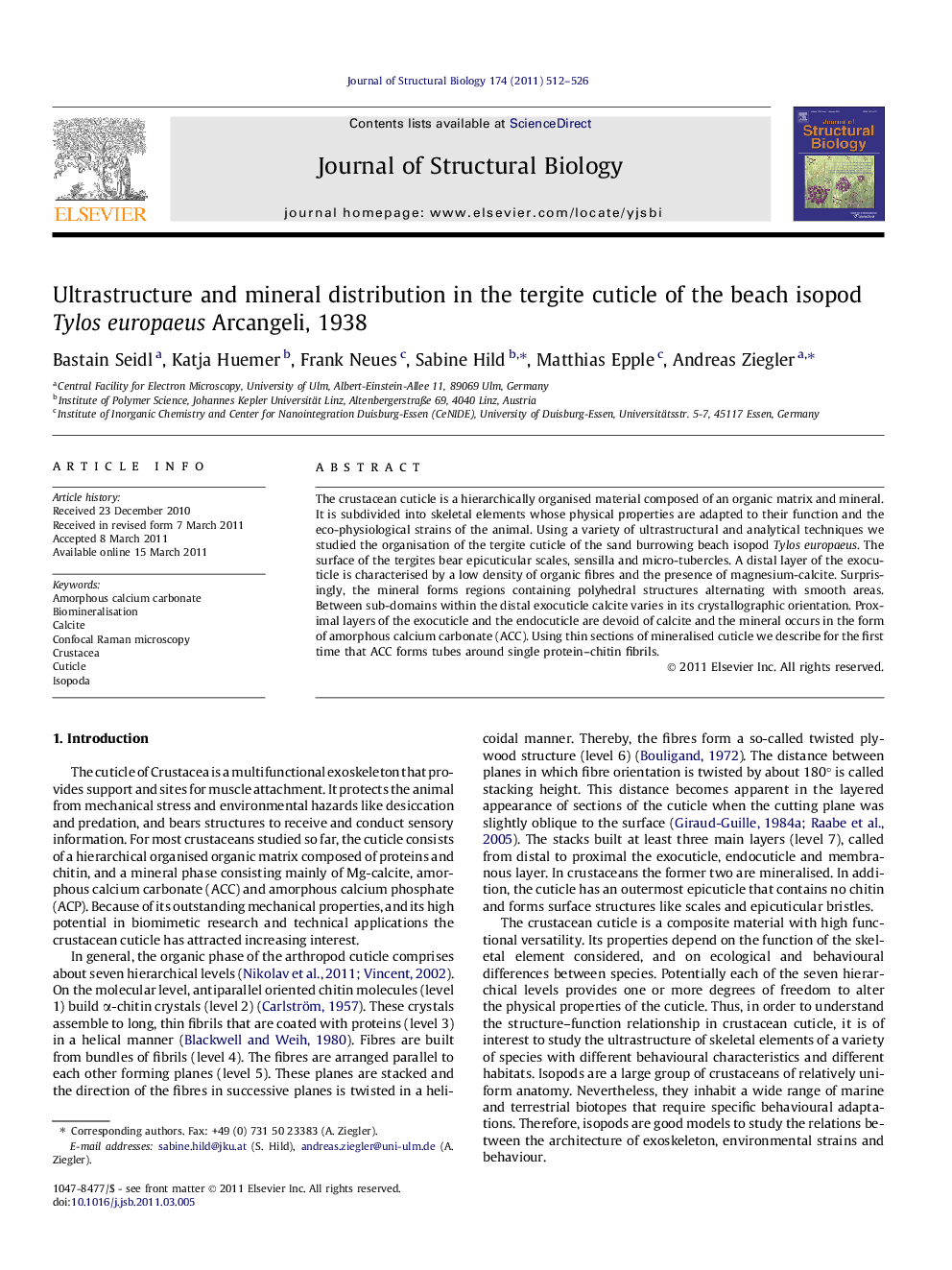| Article ID | Journal | Published Year | Pages | File Type |
|---|---|---|---|---|
| 5914865 | Journal of Structural Biology | 2011 | 15 Pages |
Abstract
The crustacean cuticle is a hierarchically organised material composed of an organic matrix and mineral. It is subdivided into skeletal elements whose physical properties are adapted to their function and the eco-physiological strains of the animal. Using a variety of ultrastructural and analytical techniques we studied the organisation of the tergite cuticle of the sand burrowing beach isopod Tylos europaeus. The surface of the tergites bear epicuticular scales, sensilla and micro-tubercles. A distal layer of the exocuticle is characterised by a low density of organic fibres and the presence of magnesium-calcite. Surprisingly, the mineral forms regions containing polyhedral structures alternating with smooth areas. Between sub-domains within the distal exocuticle calcite varies in its crystallographic orientation. Proximal layers of the exocuticle and the endocuticle are devoid of calcite and the mineral occurs in the form of amorphous calcium carbonate (ACC). Using thin sections of mineralised cuticle we describe for the first time that ACC forms tubes around single protein-chitin fibrils.
Keywords
Related Topics
Life Sciences
Biochemistry, Genetics and Molecular Biology
Molecular Biology
Authors
Bastain Seidl, Katja Huemer, Frank Neues, Sabine Hild, Matthias Epple, Andreas Ziegler,
